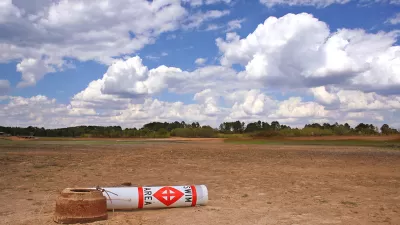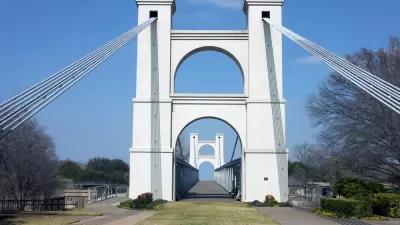A water- and chemical-intensive process to mine natural gas may pose a threat to the watershed supplying drinking water to 14 million people.
"Trillions of cubic feet of natural gas are locked under the Marcellus Shale that runs from West Virginia, through Ohio, across most of Pennsylvania and into the Southern Tier of New York state. It takes an estimated 3 million to 5 million gallons of water per well to drill down to the natural gas in a process called hydraulic fracturing, or fracking. The water is mixed with resin-coated sand and a cocktail of hazardous chemicals, including hydrochloric acid, nitrogen, biocides, surfactants, friction reducers and benzene to facilitate the fracturing of the shale to extract the gas.
About 60 percent of the toxic water used to extract the natural gas-touted in mendacious commercials by the natural gas industry as 'clean' energy-is left underground. The rest is stored in huge, open pits that dot the landscapes at drilling sites, before it is loaded into hundreds of large vehicles and trucked to regional filtration facilities.
The New York City watershed lies within the Marcellus Shale. This watershed provides unfiltered water to more than 14 million people in New York City, upstate New York, Philadelphia and northern New Jersey. It is the largest unfiltered drinking water supply in the United States. And if the federal government does not intervene swiftly, it could become contaminated."
FULL STORY: Is the Water Supply for 8 Million People in New York City at Risk?

Alabama: Trump Terminates Settlements for Black Communities Harmed By Raw Sewage
Trump deemed the landmark civil rights agreement “illegal DEI and environmental justice policy.”

Planetizen Federal Action Tracker
A weekly monitor of how Trump’s orders and actions are impacting planners and planning in America.

The 120 Year Old Tiny Home Villages That Sheltered San Francisco’s Earthquake Refugees
More than a century ago, San Francisco mobilized to house thousands of residents displaced by the 1906 earthquake. Could their strategy offer a model for the present?

In Both Crashes and Crime, Public Transportation is Far Safer than Driving
Contrary to popular assumptions, public transportation has far lower crash and crime rates than automobile travel. For safer communities, improve and encourage transit travel.

Report: Zoning Reforms Should Complement Nashville’s Ambitious Transit Plan
Without reform, restrictive zoning codes will limit the impact of the city’s planned transit expansion and could exclude some of the residents who depend on transit the most.

Judge Orders Release of Frozen IRA, IIJA Funding
The decision is a victory for environmental groups who charged that freezing funds for critical infrastructure and disaster response programs caused “real and irreparable harm” to communities.
Urban Design for Planners 1: Software Tools
This six-course series explores essential urban design concepts using open source software and equips planners with the tools they need to participate fully in the urban design process.
Planning for Universal Design
Learn the tools for implementing Universal Design in planning regulations.
Clanton & Associates, Inc.
Jessamine County Fiscal Court
Institute for Housing and Urban Development Studies (IHS)
City of Grandview
Harvard GSD Executive Education
Toledo-Lucas County Plan Commissions
Salt Lake City
NYU Wagner Graduate School of Public Service





























